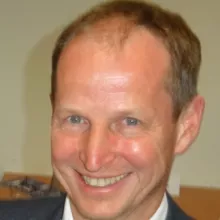Sustainability through Cross Border Circular Economy (SCRCE)
Reading time approximately 4 minutes - Read, like, comment!
„A successful achievement of the sustainable development goal 12: „Responsible Consumption and Production“ of the United Nations (SDG 12) needs the transformation of the economy into a sustainable economy which needs to be organized as a circular economy.“
We as partners from Sweden, Italy, Greece and Germany started in October 2018 a strategic partnership for adult education and an exchange of good practices (Project-No.: 2018-1-DE02-KA204-005230) in order to take a close look at this statement. The point of origin was a survey based on a questionnaire that was developed by one of the partners before.

"Circular Economy" by EPRS (CC-BY 4.0)
Circular Economy versus consumption patterns
A little bit naive at the beginning we thought that the „cross-border“ aspect of a circular economy in a world based on imports and exports would be our main challenge. But relatively early we found out that the question how a circular economy would look like based on today's consumption patterns challenged us. All partners looked for best practice examples of circular economy businesses and projects and we had many discussions at our meetings and over the internet. Somehow we came closer to the answer of the question what determines a „circular economy“ and we even found some results for the cross-border aspect. We were also able to identify cultural differences concerning specific cycles: not everything that works in one country works in another country. And we agreed to affirm that circular economy might be a sustainable way to stop today's exploitation of the natural ressources, production and consumption as an essential problem for the survival of mankind.
Circular Economy in the context of Adult Education
What does this have to do with adult education: a lot! A cross-border circular economy is nothing which could be imposed by state authorities on the consumers and producers. It would not work because everyone who would be obliged to implement the concept would have to have the necessary knowledge and skills to do so. That is so because circular economy is a lifestyle rather than an economic model. And a lifestyle is teachable and therefore a matter for adult education.
Our way to success
So we tried to develop an educational approach using the exchange of good practices with the aim that experts and people start to think about a circular economical lifestyle. At best we wanted to find out and give hints how such a lifestyle might look like. Within our strategic partnership we did learn how to identify corresponding best practice examples and what we can learn about their contribution to a circular economy. We improved the questionnaire to find examples and developed education mechanisms for the creation of awareness. We plan to present such a mechanism in the form of a manual at our big closing event in September 2020 in Bonn. Our work for the improvement was a learning process itself helping us to identify obstacles to understand circular economy and to find imaginable approaches to realize circular economy as a complex international system.
Education Mechanisms for SCRCE
We did agree upon the fact that know-how about circular economy and its implementation is missing in society as a whole. We came to the conclusion to develop at first the idea of finding a unified approach to reach experts, political decision-makers and the general public of adults without focusing on a specific target group. Experts should be encouraged to build up the necessary resources and capacities, political decision-makers should be able to assess better which accompanying measures they should initiate and the general public should adapt their lifestyle accordingly. We are currently developing our manual that could be used by all adults as a means of adult education.
Concerning the blog, we intend to let our readers participate in our discussions and to present various aspects of a cross-border circular economy in order to offer support to later users of our manual as well as help and suggestions for their own educational and awareness process.
| Read more contributions from the project on their EPALE-Project Page! |

About the author: Dr. Volker Ludwig studied Industrial Engineering and Management at the Technical University of Darmstadt and has been managing a technical consulting company in Bonn since 2002. He is also responsible for the international section of the German Association for Waste Management e.V., Berlin, and coordinates the SCRCE project on cross-border recycling management as CEO of his company https://www.godesk.it from Bonn / Germany with the partners Changemaker from Sweden http://changemaker.nu, Godesk from Italy www.ludwig-germany.com, EKOGREECE from Greece https://ekogreece.com and NGO NEST Berlin from Berlin / Germany http://ngonest.weebly.com.
Image Sources:
Circular Economy by EPRS used under CC-BY 4.0 International/ Use of both images together.
Volker Ludwig by Volker Ludwig
Commentaar
The circular economy is an intellectual manipulation
- Login of registreer om te reageren





Eine spannende Aufgabe für die Erwachsenenbildung